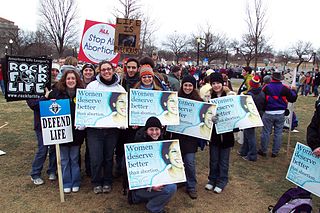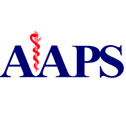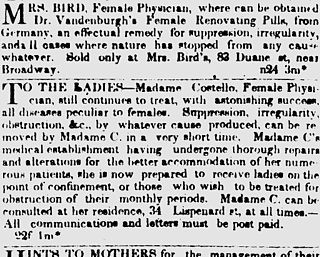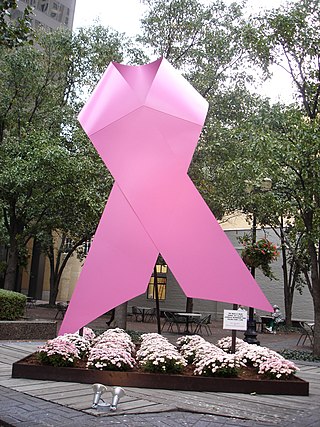Abortion is the termination of a pregnancy by removal or expulsion of an embryo or fetus. An abortion that occurs without intervention is known as a miscarriage or "spontaneous abortion"; these occur in approximately 30% to 40% of all pregnancies. When deliberate steps are taken to end a pregnancy, it is called an induced abortion, or less frequently "induced miscarriage". The unmodified word abortion generally refers to an induced abortion. The most common reason women give for having an abortion is for birth-timing and limiting family size. Other reasons reported include maternal health, an inability to afford a child, domestic violence, lack of support, feeling they are too young, wishing to complete education or advance a career, and not being able or willing to raise a child conceived as a result of rape or incest.

Breast cancer is a cancer that develops from breast tissue. Signs of breast cancer may include a lump in the breast, a change in breast shape, dimpling of the skin, milk rejection, fluid coming from the nipple, a newly inverted nipple, or a red or scaly patch of skin. In those with distant spread of the disease, there may be bone pain, swollen lymph nodes, shortness of breath, or yellow skin.
Late termination of pregnancy, also referred to as third trimester abortion, describes the termination of pregnancy by induced abortion during a late stage of gestation. In this context, late is not precisely defined, and different medical publications use varying gestational age thresholds. As of 2015 in the United States, more than 90% of abortions occur before the 13th week, 1.3% of abortions in the United States took place after the 21st week, and less than 1% occur after 24 weeks.
The abortion–breast cancer hypothesis posits that having an induced abortion can increase the risk of getting breast cancer. This hypothesis is at odds with mainstream scientific opinion and is rejected by major medical professional organizations; despite this, it continues to be widely propagated as pseudoscience, typically in service of an anti-abortion agenda.

Alveda Celeste King is an American activist, author, and former state representative for the 28th District in the Georgia House of Representatives.
Joel Lewis Brind is a professor of human biology and endocrinology at Baruch College, City University of New York and a leading advocate of the abortion-breast cancer hypothesis, which posits that abortion increases the risk of breast cancer. This idea is rejected by mainstream medical professional organizations and there is overwhelming evidence in the peer-reviewed medical literature debunking it. Brind is openly contemptuous of mainstream medical professional organizations and journals, accusing them of conducting a deliberate cover-up with the goal of "protecting the abortion industry."
Dilation and evacuation (D&E) is the dilation of the cervix and surgical evacuation of the uterus after the first trimester of pregnancy. It is a method of abortion as well as a common procedure used after miscarriage to remove all pregnancy tissue.

An unsafe abortion is the termination of a pregnancy by people lacking the necessary skills, or in an environment lacking minimal medical standards, or both. An unsafe abortion is a life-threatening procedure. It includes self-induced abortions, abortions in unhygienic conditions, and abortions performed by a medical practitioner who does not provide appropriate post-abortion attention. About 25 million unsafe abortions occur a year, of which most occur in the developing world.

A crisis pregnancy center (CPC), sometimes called a pregnancy resource center (PRC) or a pro-life pregnancy center, is a type of nonprofit organization established by anti-abortion groups primarily to persuade pregnant women not to have an abortion. In the United States, CPCs that qualify as medical clinics may also provide pregnancy testing, sonograms, and other services, while many others operate without medical licensing under varying degrees of regulation.
In biology and medicine, gravidity and parity are the number of times a female has been pregnant (gravidity) and carried the pregnancies to a viable gestational age (parity). These two terms are usually coupled, sometimes with additional terms, to indicate more details of the female's obstetric history. When using these terms:

The United States anti-abortion movement contains elements opposing induced abortion on both moral and religious grounds and supports its legal prohibition or restriction. Advocates generally argue that human life begins at conception and that the human zygote, embryo or fetus is a person and therefore has a right to life. The anti-abortion movement includes a variety of organizations, with no single centralized decision-making body. There are diverse arguments and rationales for the anti-abortion stance. Some anti-abortion activists allow for some permissible abortions, including therapeutic abortions, in exceptional circumstances such as incest, rape, severe fetal defects, or when the woman's health is at risk.

Susan G. Komen is a breast cancer organization in the United States.

Bernard N. Nathanson was an American medical doctor and co-founder, in 1969, of the National Association for the Repeal of Abortion Laws (NARAL), later renamed National Abortion Rights Action League. He was also the former director of New York City's Center for Reproductive and Sexual Health, but later became an anti-abortion activist. He was the narrator for the controversial 1984 anti-abortion film The Silent Scream.

The Association of American Physicians and Surgeons (AAPS) is a politically conservative non-profit association that promotes conspiracy theories and medical misinformation, such as HIV/AIDS denialism, the abortion–breast cancer hypothesis, and vaccine and autism connections, through its official publication, the Journal of American Physicians and Surgeons. The association was founded in 1943 to oppose a government attempt to nationalize health care. The group has included notable members, including American Republican politicians Ron Paul, Rand Paul and Tom Price.

The practice of induced abortion—the deliberate termination of a pregnancy—has been known since ancient times. Various methods have been used to perform or attempt abortion, including the administration of abortifacient herbs, the use of sharpened implements, the application of abdominal pressure, and other techniques. The term abortion, or more precisely spontaneous abortion, is sometimes used to refer to a naturally occurring condition that ends a pregnancy, that is, to what is popularly called a miscarriage. But in what follows the term abortion will always refer to an induced abortion.

Breast Cancer Action (BCAction) is a U.S.-based grassroots education and activist organization driven by and supporting people living with breast cancer. It was founded in 1990 by Elenore Pred, Susan Claymon, Belle Shayer, and Linda Reyes. Based in San Francisco, BCAction is known for understanding breast cancer not as an individual crisis, but a public health emergency, and for their commitment to social justice. The organization's mission is to achieve health justice for all women at risk of and living with breast cancer. BCAction is known for its Think Before You Pink campaign, launched in 2002, which encourages consumers to ask critical questions before buying pink ribbon products and holds corporations accountable for pinkwashing.

Anglicans for Life (AFL) is the anti-abortion ministry of the Anglican Church in North America and internationally associated with some members of the Anglican Communion, specifically of GAFCON. AFL educates and provides pastoral resources on the right to life position on the issues of abortion, assisted suicide, elderly care, cloning and embryonic stem cell research. AFL also educates and provides pastoral resources on abstinence and adoption. The organization has volunteer Life Leaders in more than 100 parishes in the United States, Canada, Kenya and Uganda. AFL also has the support of the American Anglican Council and of several "life-affirming churches" of the Episcopal Church of the United States. Anglicans for Life Canada is affiliated with the Anglican Network in Canada, a diocese of the Anglican Church in North America, being officially launched at 7 May 2014 in a seminar held at St. Peter and St. Paul's Anglican Church in Ottawa. The current president is Georgette Forney. The first director is Vicky Hedelius.
Risk factors for breast cancer may be divided into preventable and non-preventable. Their study belongs in the field of epidemiology. Breast cancer, like other forms of cancer, can result from multiple environmental and hereditary risk factors. The term environmental, as used by cancer researchers, means any risk factor that is not genetically inherited.

Maafa 21: Black Genocide in 21st Century America is an anti-abortion documentary film produced by anti-abortion activist Mark Crutcher in 2009. The film, which has been enthusiastically received by anti-abortion activists, argues that the modern-day prevalence of abortion among African Americans is rooted in an attempted genocide or the maafa of black people. The film is part of an anti-abortion, anti-birth control campaign aimed at African Americans.

Breast cancer awareness is an effort to raise awareness and reduce the stigma of breast cancer through education about screening, symptoms, and treatment. Supporters hope that greater knowledge will lead to earlier detection of breast cancer, which is associated with higher long-term survival rates, and that money raised for breast cancer will produce a reliable, permanent cure.













